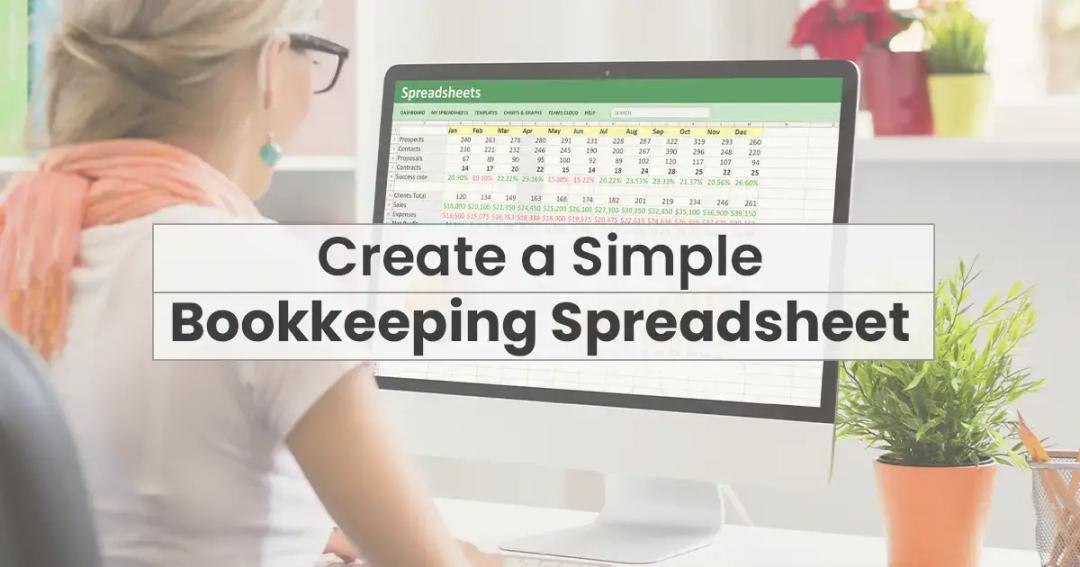
Efficiently managing your business finances may seem like a challenging task, but with a well-structured bookkeeping spreadsheet, you can easily track your financial transactions. Whether you decide to create the spreadsheet yourself or to work with an accounting professional, understanding the different types of accounts is crucial. In this article, we'll outline the key aspects of bookkeeping spreadsheets and provide a step-by-step guide to creating your own, regardless of your business size.
Types of Accounts
Whether you choose a DIY process or an accounting professional to create your bookkeeping spreadsheet, it is essential to know what to track. There are five types of accounts, or types of financial transactions, that bookkeeping spreadsheets denote. A description of each type is below:- Assets: Cash and resources owned by the business (e.g. accounts receivable, inventory)
- Equity: Value remaining after subtracting liabilities from assets (e.g. retained earnings, stock)
- Expenses or expenditures: Cash spent by the business on goods or services (e.g. salaries, utilities)
- Liabilities: Debts and obligations owed by the business (e.g. accounts payable, loans)
- Revenues or income: Money earned by the business, usually through sales
DIY versus Hiring a Pro
While creating a basic bookkeeping spreadsheet is possible using the DIY methods, hiring an accounting professional can save you time and reduce the risk of errors. Here's a step-by-step process for DIY bookkeeping spreadsheets:Step 1: Choose Bookkeeping Type
If you choose a DIY process, it is possible to create a simple bookkeeping spreadsheet in Microsoft Excel. There are dozens of templates available for users to select. Select the spreadsheet or bookkeeping template that is best for your bookkeeping needs. Business owners using Microsoft Excel can choose from two kinds of bookkeeping entries: single-entry and double-entry.Single-entry Bookkeeping
Single-entry bookkeeping is suitable for small business bookkeeping needs with fewer business transactions. This form of bookkeeping is also unique because only expenses (negative) and income (positive) transactions are recorded.Double-entry Bookkeeping
Double-entry bookkeeping is also possible in Microsoft Excel. This option suits larger businesses that perform more frequent and intensive transactions. Double-entry bookkeeping differs from single-entry bookkeeping in that double-entry Excel spreadsheets track both equity and liabilities. While single-entry bookkeeping comprises expenses and income, double-entry bookkeeping consists of expenses, income, and debits and credits. This further allows business owners to see increases (debits) and decreases (credits) and their relationship with the five accounts.Step 2: Create a Spreadsheet
After choosing which type of bookkeeping entry you'd like to create, the next step is to create a spreadsheet. In Microsoft Excel, create a Blank Workbook. It is possible to add additional Workbooks at the bottom of the current Excel spreadsheet. You'll want to add workbooks if your goal is to track expenses and incomes. You'll also want to input basic information at the top row of the template, such as the date of the transaction, an account description, the transaction amount, and the purchase category (Rent, Supplies, etc.). Double-entry spreadsheets have additional categories because they describe different types of business transactions.Step 3: Record Transactions
As you input the transactions, remember to add to the category lists that you'll use from month to month. It may be useful to add a sheet for invoices within your workbook. While you'll find this within other programs such as Microsoft Word, you can copy and paste the amounts into your Invoice sheets for even more information to reference.Step 4: Save the File in a Secure Folder
Once you've ensured your bookkeeping spreadsheet is complete, save it in a secure folder on your computer that only you have access to. You should consider password-protecting the file for an added layer of security.Advantages of Working With Professionals
Creating a simple bookkeeping spreadsheet for your business is a valuable step towards efficient financial management. While the DIY method can be the cost-effective option, outsourcing your accounting needs to a professional can save you time, reduce the risk of errors, and provide expert insights to optimize your financial strategies. By entrusting your bookkeeping to experienced professionals, you can focus on growing your business with the confidence that your financial records are accurate and organized. Ultimately, the choice to outsource your accounting needs is an investment in your business's long-term success.This post is to be used for informational purposes only and does not constitute legal, business, or tax advice. Each person should consult his or her own attorney, business advisor, or tax advisor with respect to matters referenced in this post. 1-800Accountant assumes no liability for actions taken in reliance upon the information contained herein.
